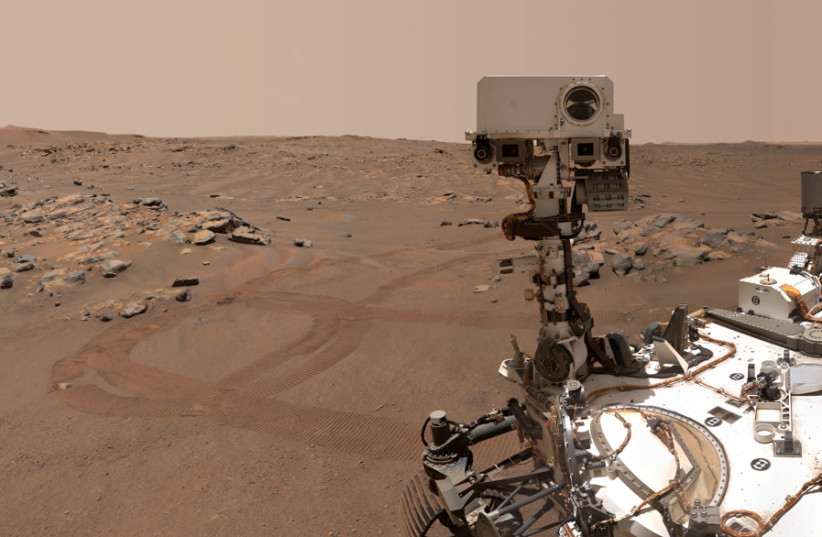NASA and DARPA have launched a collaboration to develop a nuclear thermal space rocket engine by as soon as 2027, moving the space agency closer to bringing astronauts to Mars, NASA announced on Tuesday.
A nuclear thermal engine works by transferring extremely high temperatures from a nuclear fission reactor to a liquid propellant, such as liquid hydrogen. The heat turns the liquid into a gas which then expands through a nozzle to provide thrust and propel a spacecraft.
Such an engine could be three or more times as efficient as conventional chemical rockets.
Faster rockets will help NASA realize Mars ambitions
The program, named the Demonstration Rocket for Agile Cislunar Operations (DRACO) program, will allow for faster rockets, reducing the amount of time needed to travel in space.

Faster transit times mean astronauts will need less supplies, an essential factor in getting astronauts to Mars and beyond.
The development of a nuclear thermal engine will help NASA meet its "Moon to Mars" objectives: a list of over 60 objectives the space agency aims to meet in the coming years as it brings astronauts back to the Moon and expands missions to Mars.
“NASA will work with our long-term partner, DARPA, to develop and demonstrate advanced nuclear thermal propulsion technology as soon as 2027. With the help of this new technology, astronauts could journey to and from deep space faster than ever – a major capability to prepare for crewed missions to Mars,” said NASA Administrator Bill Nelson. “Congratulations to both NASA and DARPA on this exciting investment, as we ignite the future, together.”
As part of the agreement between NASA and DARPA, NASA's Space Technology Mission Directorate (STMD) will lead technical development of the nuclear thermal engine to be integrated with DARPA's experimental spacecraft.
DARPA will lead the program including rocket systems integration and procurement, approvals, scheduling and security, cover safety and liability and ensure overall assembly and integration of the engine with the spacecraft.
“NASA has a long history of collaborating with DARPA on projects that enable our respective missions, such as in-space servicing,” said NASA Deputy Administrator Pam Melroy. “Expanding our partnership to nuclear propulsion will help drive forward NASA's goal to send humans to Mars.”
“DARPA and NASA have a long history of fruitful collaboration in advancing technologies for our respective goals, from the Saturn V rocket that took humans to the Moon for the first time to robotic servicing and refueling of satellites,” said Dr. Stefanie Tompkins, director, DARPA. “The space domain is critical to modern commerce, scientific discovery, and national security. The ability to accomplish leap-ahead advances in space technology through the DRACO nuclear thermal rocket program will be essential for more efficiently and quickly transporting material to the Moon and eventually, people to Mars.”
NASA has been exploring nuclear engines since the 1960's
NASA has been exploring the possibility of nuclear powered rocket engines since the 1960's, when it launched the Nuclear Engine for Rocket Vehicle Application (NERVA) program along with the former Atomic Energy Commission.
The program led to the design, building and testing of a number of reactors and rocket engines. At the time, then-NASA Marshall Space Flight Center director and rocket pioneer, Wernher von Braun, advocated for a mission to Mars using two rockets with three nuclear engines on each rocket. The proposed mission would have included a dozen crew members.
Due to shifting priorities and budget cuts, work on the nuclear propulsion program ended in 1972.
“With this collaboration, we will leverage our expertise gained from many previous space nuclear power and propulsion projects,” said Jim Reuter, associate administrator for STMD. "Recent aerospace materials and engineering advancements are enabling a new era for space nuclear technology, and this flight demonstration will be a major achievement toward establishing a space transportation capability for an Earth-Moon economy.”
NASA is also working with the US Energy Department to develop advanced space nuclear technologies to harness power for space exploration..
In NASA's Fission Surface Power project, the Energy Department awarded three commercial design efforts to develop nuclear power plant technologies that could be used on the surface of the Moon and, eventually, Mars.
NASA and the Energy Department are additionally working to advance higher temperature fission fuels and reactor designs for a nuclear thermal propulsion engine for a longer-range goal for increased engine performance. The technologies designed in that project will not be used for the DRACO program.
In 2021, NASA and the Energy Department selected three reactor design concept proposals for a nuclear thermal propulsion system, each valued at about $5 million.
BWX Technologies, Inc., General Atomics Electromagnetic Systems and Ultra Safe Nuclear Technologies received 12-month contracts to produce a conceptual reactor design for future space missions.
At the end of the contract periods, the concepts will be reviewed and recommendations will be provided to NASA to establish the basis for future technology design and development.
